“Global Customer Information System Market to reach a market value of USD 3.1 Billion by 2031 growing at a CAGR of 11.9%”
The Global Customer Information System Market size is expected to reach $3.1 billion by 2031, rising at a market growth of 11.9% CAGR during the forecast period.
China has ambitious plans to construct or renovate 80,000 km of wastewater collection pipeline networks to improve this infrastructure further. This expansion will improve the efficiency of wastewater collection and treatment and necessitate sophisticated management systems. Customer Information Systems will be essential in managing the vast amounts of data these infrastructure projects generate. Hence, in 2023, the Asia Pacific region generated 26% revenue share in the market. Rapid urbanization, expanding utility sectors, and increasing government initiatives to modernize infrastructure contribute to this region’s growth. Additionally, the rising adoption of digital solutions and the need to manage large customer bases efficiently propel the demand for customer information systems in Asia Pacific.
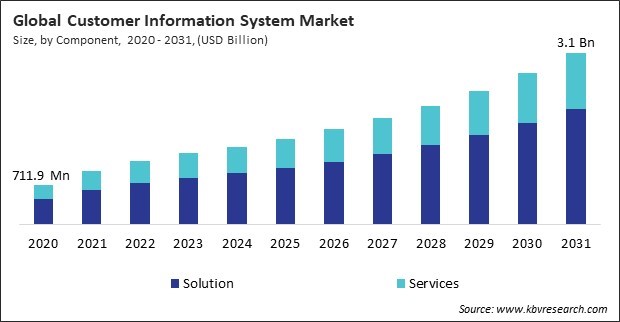
The major strategies followed by the market participants are Partnerships as the key developmental strategy to keep pace with the changing demands of end users. For instance, In August, 2024, Cayenta, a subsidiary of Harris Computer, partnered with KUBRA, a customer experiences solutions provider, to enhance utility customer experience management by integrating KUBRA's innovative solutions with Cayenta's CIS software. Additionally, In August, 2023, IBM Corporation partnered with Salesforce, a cloud computing company, to accelerate AI adoption for CRM. IBM Consulting would help clients integrate Salesforce AI technologies, using its expertise and watsonx platform.
Based on the Analysis presented in the KBV Cardinal matrix; Microsoft Corporation are the forerunners in the Customer Information System Market. Companies such as Oracle Corporation, IBM Corporation, SAP SE are some of the key innovators in Customer Information System Market. In September, 2023, Oracle Corporation teamed up with Microsoft, an American technology company, announced Oracle Database@Azure, enabling direct access to Oracle database services within Microsoft Azure datacenters.
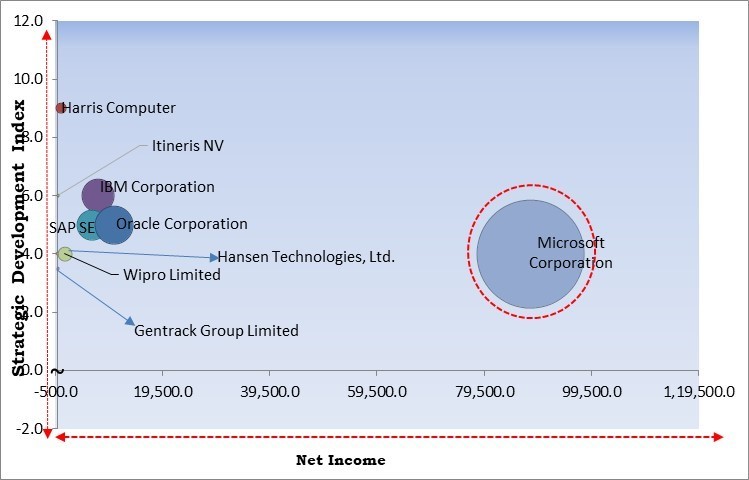
Efficient billing systems automate invoicing, reducing manual errors and ensuring timely billing. This automation leads to quicker payment cycles and improved cash flow for businesses. Automated billing minimizes discrepancies arising from manual entries, ensuring customers are correctly billed. This accuracy helps build trust and reduce customer disputes related to billing. Modern CIS solutions allow businesses to offer multiple payment options to customers, catering to their preferences and improving the likelihood of on-time payments. Thus, increasing demand for efficient billing and customer management drives the market’s growth.
Omnichannel strategies prioritize a unified brand voice and messaging across all platforms. Customer Information Systems enable businesses to maintain this consistency by consolidating customer data and interactions from various channels into a single view, ensuring that all communications are coherent and relevant. CIS solutions facilitate smoother transitions between channels by providing a holistic view of customer interactions, allowing customers to engage with a brand fluidly, whether online or offline. This approach offers a comprehensive understanding of customer requirements. Therefore, the expansion of omnichannel communication strategies is propelling the market’s growth.
Implementing a CIS often requires substantial hardware, software, and network infrastructure investments. Organizations must budget for servers, storage solutions, and other necessary technology components, which can lead to high upfront costs. Many CIS solutions involve substantial licensing fees, especially for enterprise-grade systems. These costs can accumulate quickly, placing a financial strain on businesses. This training often requires additional resource investment in time and money, which can significantly burden organizations. Hence, high implementation and maintenance costs are impeding the market’s growth.
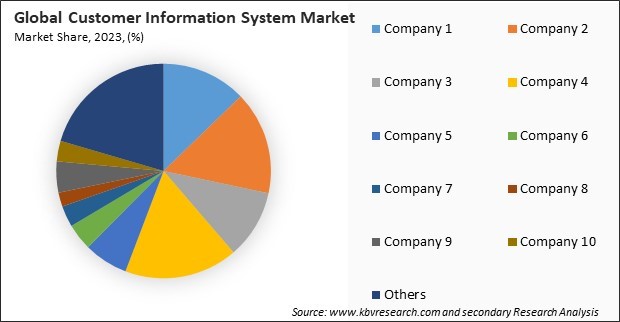
The leading players in the market are competing with diverse innovative offerings to remain competitive in the market. The above illustration shows the percentage of revenue shared by some of the leading companies in the market. The leading players of the market are adopting various strategies in order to cater demand coming from the different industries. The key developmental strategies in the market are Partnerships & Collaborations.
Based on component, the market is divided into solution and services. The services segment attained 34% revenue share in the market in 2023. This segment includes various professional services such as consulting, implementation, support, and maintenance. The growing complexity of customer information systems drives the demand for specialized services to ensure successful deployment and operation. Organizations often rely on these services to optimize their systems, ensure compliance with regulatory requirements, and enhance overall customer experience.
On the basis of services type, the market is segmented into legacy extension consulting service, customer information system implementation service, and support service. In 2023, the support service segment attained 32% revenue share in the market. Support services include ongoing maintenance, troubleshooting, system upgrades, and technical assistance, essential for customer information systems’ smooth functioning and longevity. The continuous need for these services to address technical issues, ensure system stability, and provide regular updates contributes significantly to their revenue generation.
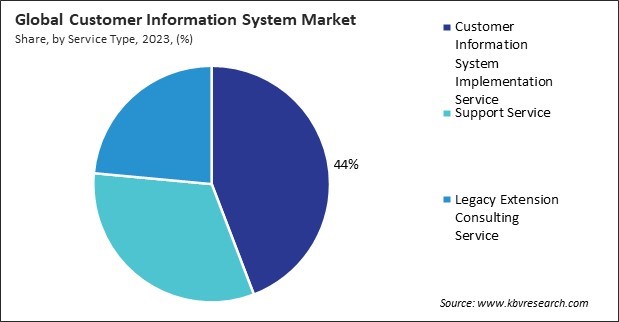
By application, the market is divided into water and wastewater management, electricity and power management, and utility gas management. The utility gas management segment procured 13% revenue share in the customer information system market in 2023. The significant revenue share in this segment can be linked to the increasing adoption of customer information systems to manage gas distribution, meter reading, and customer billing. These systems help gas utility companies improve accuracy in billing, manage customer accounts effectively, and ensure regulatory compliance, thereby driving revenue growth.
Free Valuable Insights: Global Customer Information System Market size to reach USD 3.1 Billion by 2031
Region-wise, the market is analyzed across North America, Europe, Asia Pacific, and LAMEA. The North America region witnessed 39% revenue share in the market in 2023. This can be attributed to the high adoption rate of advanced technologies, well-established utility sectors, and significant investments in infrastructure modernization. The presence of major market players and the focus on enhancing customer service and operational efficiency further drive the demand for customer information systems in this region.
| Report Attribute | Details |
|---|---|
| Market size value in 2023 | USD 1.3 Billion |
| Market size forecast in 2031 | USD 3.1 Billion |
| Base Year | 2023 |
| Historical Period | 2020 to 2022 |
| Forecast Period | 2024 to 2031 |
| Revenue Growth Rate | CAGR of 11.9% from 2024 to 2031 |
| Number of Pages | 242 |
| Number of Tables | 344 |
| Report coverage | Market Trends, Revenue Estimation and Forecast, Segmentation Analysis, Regional and Country Breakdown, Competitive Landscape, Market Share Analysis, Porter’s 5 Forces Analysis, Company Profiling, Companies Strategic Developments, SWOT Analysis, Winning Imperatives |
| Segments covered | Component, Service Type, Application, Region |
| Country scope |
|
| Companies Included | IBM Corporation, SAP SE, Oracle Corporation, Harris Computer (Constellation Software, Inc.), Microsoft Corporation, Fluentgrid Limited, Gentrack Group Limited, Hansen Technologies, Ltd., Itineris NV, Wipro Limited |
By Component
By Service Type
By Application
By Geography
The Market size is projected to reach USD 3.1 billion by 2031.
Increasing Demand for Efficient Billing and Customer Management are driving the Market in coming years, however, High Implementation and Maintenance Costs restraints the growth of the Market.
IBM Corporation, SAP SE, Oracle Corporation, Harris Computer (Constellation Software, Inc.), Microsoft Corporation, Fluentgrid Limited, Gentrack Group Limited, Hansen Technologies, Ltd., Itineris NV, Wipro Limited
The expected CAGR of this Market is 11.9% from 2024 to 2031.
The Customer Information System Implementation Service segment is leading the Market by Service Type in 2023; thereby, achieving a market value of $1.3 billion by 2031.
The North America region dominated the Market by Region in 2023, thereby, achieving a market value of $1.2 billion by 2031.
Our team of dedicated experts can provide you with attractive expansion opportunities for your business.
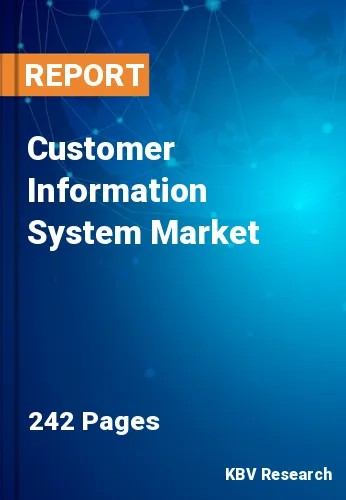
 Drivers
Drivers
 Restraints
Restraints
 Opportunities
Opportunities
 Challenges
Challenges
